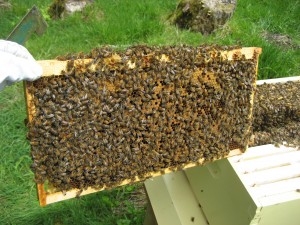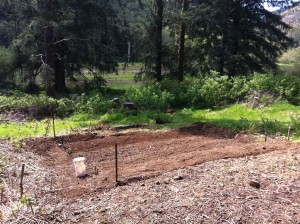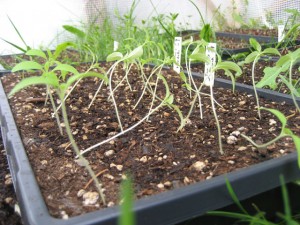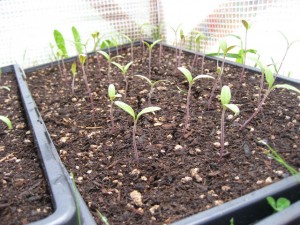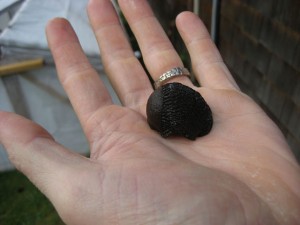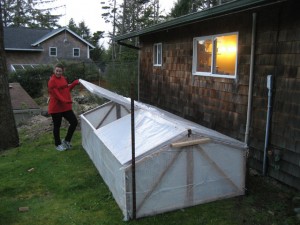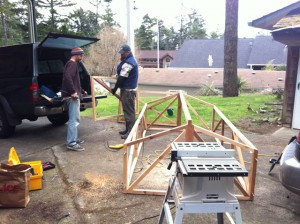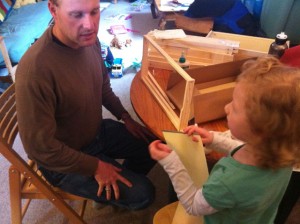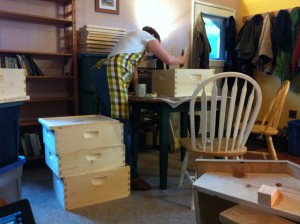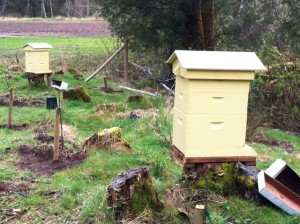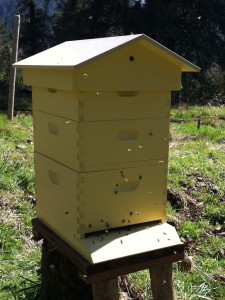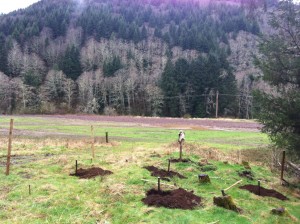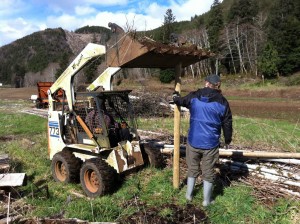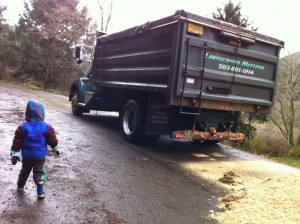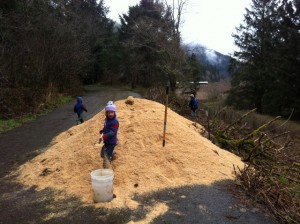I got a call last week from an old friend who needed some help doing accessibility surveys for a city back east, and was willing to pay me to fly me out and do them. This is bad in some ways, because it means a week away from farming, right in the middle of the busy season. But the benefits outweigh it: some cash to spend on farming, visits to friends and family, and learning more about beekeeping.
It turns out that my friend Mark started beekeeping a few weeks after I did, and is going through many of the same joys and trials. “I have to put on a second deep hive body this afternoon,” he told me when I called to invite myself to dinner with his family. “Would you like to come with me?”
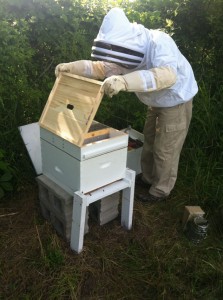 You bet! So he grabbed his extra bee hood (sized for his 7-year-old daughter, unfortunately) and we were off. He lives in a small town, so keeps his bees on a nearby farm. The site was quite pretty, much like ours, but I guess that is the nature of small farms in the early summer. We suited up and made our way over to the hive.
You bet! So he grabbed his extra bee hood (sized for his 7-year-old daughter, unfortunately) and we were off. He lives in a small town, so keeps his bees on a nearby farm. The site was quite pretty, much like ours, but I guess that is the nature of small farms in the early summer. We suited up and made our way over to the hive.
It’s cool when old friends learn a new hobby independently of each other, and can then trade experiences and cross-pollinate. Much of beekeeping is the same the world over, and Mark and I have much in common. He found an experienced beekeeper with about 20 hives to mentor him, he uses two deep hive bodies, and has much of the same equipment as I do. Heck, I just added MY second deep hive body last week.
The differences were even more interesting. His hive top is flat (the traditional style) and mine is gabled and vented, to help dissipate the pervasive Oregon moisture. He uses a different style of hive tool and top feeder than I do, and I might try his Miller feeder next (it seems easier to use and to hold more syrup). I use screened bottom boards to help with ventilation and mite reduction, and he liked that idea and plans on replacing his solid one next season.
There were cultural differences in the bees, too. His hive is a trapped swarm that started with nothing, and at only three weeks old, already has as much honey and brood as my two-month old nuc hive. Yowzah, that’s fast! But Indiana has really hot summers and lots of sunny days, giving the bees much more forage time than mine. I’ve been told the national annual average is sixty pounds of honey per hive, and coastal Oregon can usually expect about half that. In contrast, Mark says his mentor/ friend pulled about 120 pounds off of each hive last fall. That would be awesome, but if I had to pick, I’d rather have the mild Oregon summers than be buried in gallons of honey.
It will be fun to see how our experiences continue to differ. As I was bidding his family goodbye, they gave me a jar of homemade strawberry jam and a pint of maple syrup they tapped from their own trees. Yep, they’re living the dream. And it’s a lot more friendly than the goodbye gifts his bees gave me: a pair of matching welts, one on the arm and one on the ear. At least now I know I am not allergic to bee stings!


